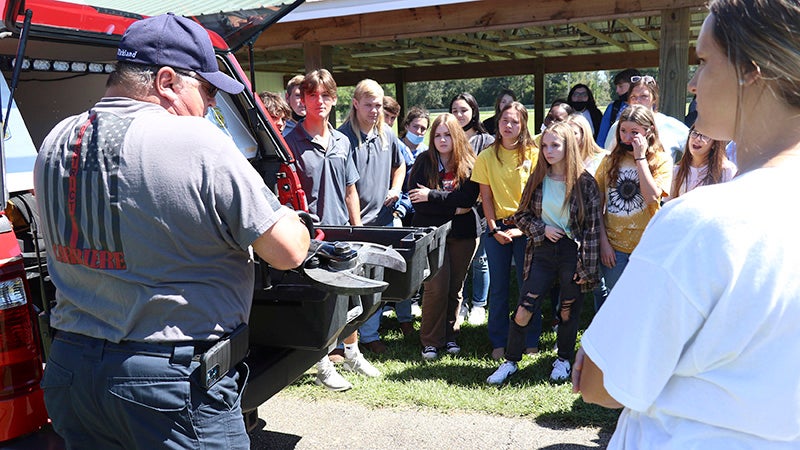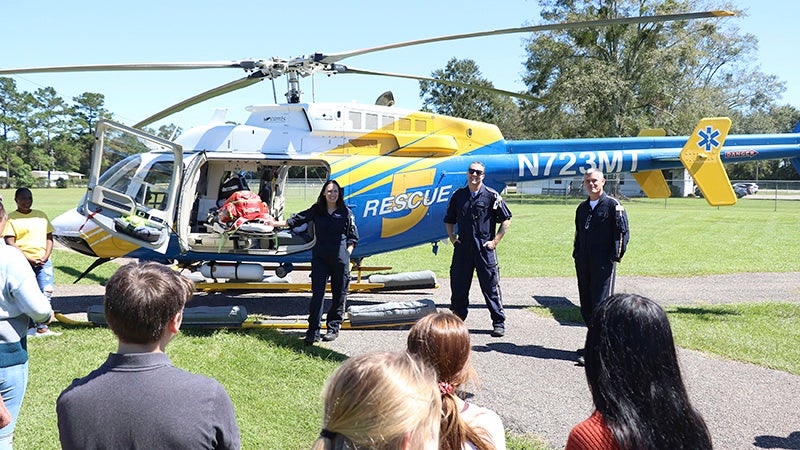Students learn about careers in emergency response
Published 4:57 pm Saturday, October 2, 2021
Dozens of health science students got a chance to talk to and hear from first responders to get some insight into lesser known medical careers.
Pearl River Central High School Health Science Instructor Jennifer Spence said the aim of bringing in a volunteer firefighter with EMT training and a flight nurse and flight paramedic was to show her students that there are various ways to make a living in the medical field.
“Most students think they can only be a doctor or a nurse, but there are so many things that are included in the medical field,” Spence said.
As part of the experience, 19 first year students and 28 second year students walked to a practice field on campus where they got a change to hear from Carriere Volunteer firefighter Randy Kirkland, who also has EMT training and watch Rescue 5 land in the field before meeting the helicopter crew.
Kirkland told the students that the timeframe from EMT basic training to paramedic training is about two and a half years.
That training can be used to start a career, and as Kirkland does, can be used to help the community by becoming a volunteer firefighter.
The Carriere Volunteer Fire Department allows those interested to be a first responder at age 18, but those who are younger can opt for the cadet program. In the cadet program, volunteers learn basic CPR and first aid. Kirkland said that some nurses also volunteer with fire departments, and women are increasingly becoming regular members of local departments.
Most firefighters in this country are volunteers, he said. Typically only cities have the funding to pay people to be firefighters, and the pay is usually low. Kirkland said that Picayune Fire Department has a starting pay of about $10 an hour. But in bigger cities, the pay is higher.
“Being a volunteer will be the most rewarding thing you’ll ever do,” Kirkland said.
Students also got a chance to hear from the crew of Rescue 5, a Bell 407 ambulance helicopter that typically transports people who have suffered serious injuries.
Flight Nurse Ashley Craft and Flight Paramedic Kyle Carter shared some information about what it’s like to work on Rescue 5.
Her medical career began in the Emergency Room as a nurse. Craft said three years of nursing experience is required to be a flight nurse, and the pay is less.
Craft said in her 15 months as a flight nurse, the job can be challenging, but they can provide more care in Rescue 5 than she was allowed to in a hospital.
Craft said she and her team carry a ventilator, blood, have access to just about every medication needed to provide care and can even perform CPR while airborne. However, space in the helicopter is tight, so when she has to perform CPR it can be difficult.
Crews on a rescue helicopter have to work fast. Craft said that when she and her team arrive at a scene, they have 10 minutes to exit the helicopter, tend to the patient and have them on board. Once they arrive at the hospital, they have about 20 minutes to unload the patient and be back in the air.





